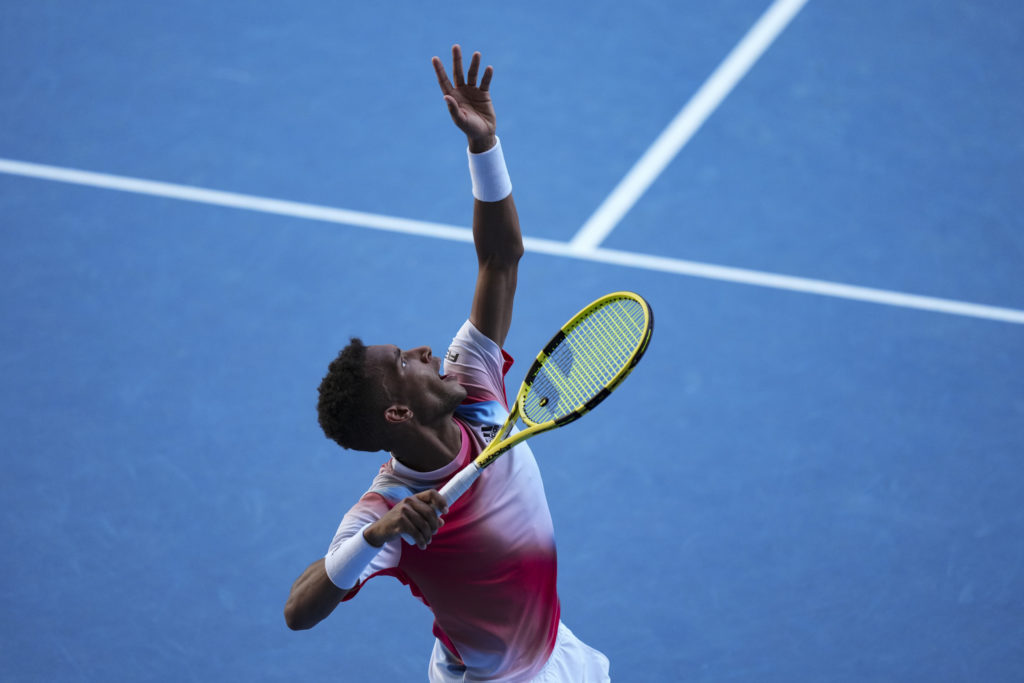
It took a while – especially after a barrage of frenetic hitting by Marin Cilic in the first set – but Félix Auger-Aliassime came through to reach the Australian Open quarter-finals on Monday with a 2-6, 7-6(7), 6-2, 7-6(4) victory over the veteran Croat.
Cilic, who red-lined his game against fifth-seeded Andrey Rublev in the third round Saturday, carried that form over to John Cain Arena against Auger-Aliassime – lashing 14 winners to four for his opponent in the 35-minute opening set.
After he won it, the dubious ‘win predictor’ function on the TV graphics switched from projecting Auger-Aliassime as 56-44 to win to favouring Cilic 72-28.
That seemed extreme and an under-estimation of Auger-Aliassime’s ability to start to sink his teeth into the match. Also for not accounting for the possibility that Cilic would cool off or “de-zone” (dézoner in French) as one tennis fan in Montreal quaintly put it in 2007 when Frank Dancevic came back to earth against Rafael Nadal after being “in the zone” for the first set of a match that wound up 4-6, 6-2, 6-4 for the redoubtable Spaniard.
Sure enough, unforced errors gradually crept into Cilic’s game but he hung in through the second set and had a set point leading 6-5 in the tiebreak that Auger-Aliassime erased with a 204 km/h ace, one of his 22 on the day. But it was Auger-Aliassime who was creating most of the chances – holding a break point leading 3-2 in the second set and three more break points/set points ahead 5-4. He finally converted on his fifth set point at 8-7 in the tiebreak when Cilic erred into the net with a backhand service return.
Auger-Aliassime had weathered the Cilic onslaught and the vibe of the match veered in his way in the third and into the fourth set. That’s when Cilic got a second wind but it was too little too late.
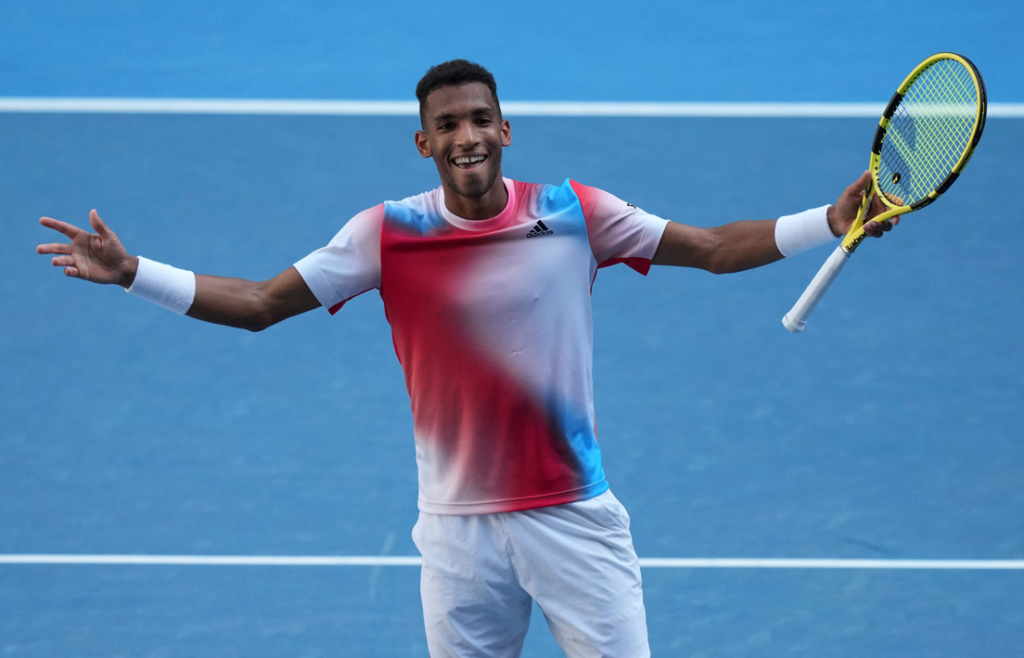
A clear sign of Auger-Aliassime’s serving dominance was that he didn’t face a break point over the course of the final three sets while Cilic had to deal with 13.
Over those sets, Auger-Aliassime won 88 per cent of first-serve points and 63 per cent of second-serve points to 86 per cent on first serve and 41 per cent on second serve for Cilic.
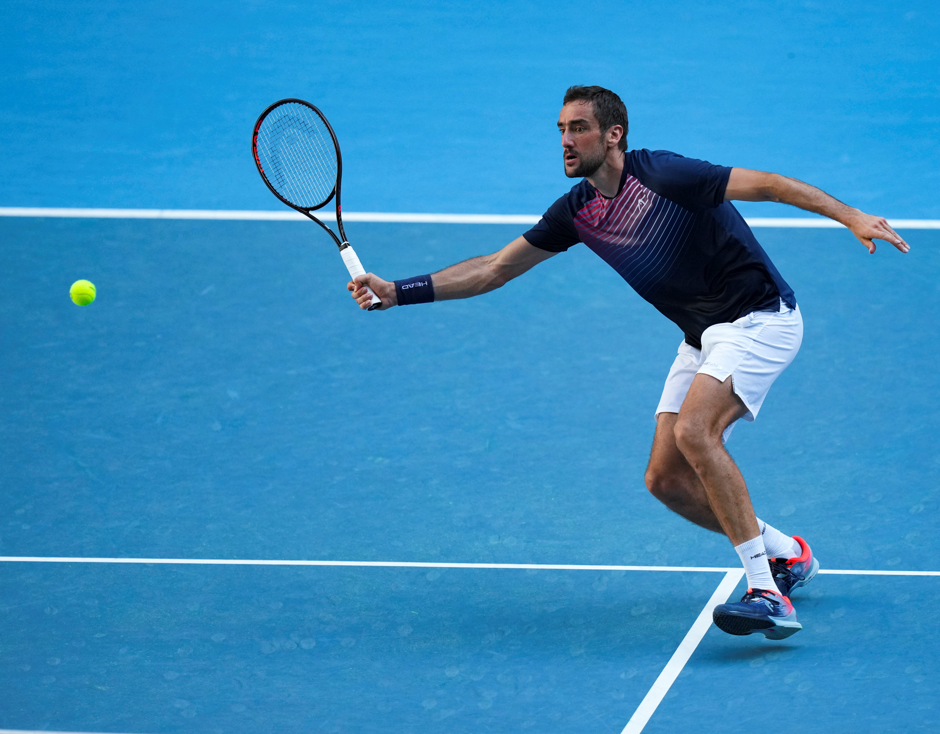
“I played an amazing first set and then second set I believe I had two or three games at love-30 – some small chances,” Cilic said post-match. “I didn’t do anything wrong in those situations, he just served tremendously well on those critical points and overall his serving performance was fantastic.”.
Auger-Aliassime’s serving has been key in his four wins so far, especially his ability to crack aces and service winners at crucial moments.
“He was hitting so clean at the start of the match,” Auger-Aliassime said about Cilic. “I played one poor game at 4-2 but the rest of the (first) set he was playing better than me. I was serving a bit poorly in the first set and I knew I just had to stay calm, stay composed knowing that if I start serving better I’m going to give myself chances in the second. I felt I could be dictating more and doing what I wanted on the court from the third and then again in the fourth set.”
The match lasted three hours and 35 minutes in heat that peaked at over 30 degrees Celsius but Auger-Aliassime emerged from it remarkably fresh. “I’m feeling good,” he said. “It was quite hot at the start – down here in Australia it hits you pretty hard. But with the shadow at the end, it was all right. It’s still early in the day. I’m going to have time to recover before I play again on Wednesday, so it’s the perfect scenario.”
Across the net for his quarter-final match-up will be the second seed and favourite to win his second Grand Slam title in a row (after the US Open last September), Daniil Medvedev. The two players have met three times with the 25-year-old Russian emerging victorious on each occasion – 6-4, 6-0 at the ATP Cup two weeks ago in Sydney, 6-4, 7-5, 6-2 in the 2021 US Open semi-finals and 3-6, 6-4, 7-6(7) in a late-night connoisseur’s match in Toronto in 2018 when Auger-Aliassime was still a pup (just turned 18) and Medvedev, 22 and a relative unknown.
“It’s a good chance to test myself, to see what I can prove,” Auger-Aliassime said about playing the spindly, 6-foot-6 Russian. “I can try to mix up things as much as I want. The reality is he’s the best player almost in the world now. I need to play a great match. I need to be able to give a great effort both mentally and physically to go through.”
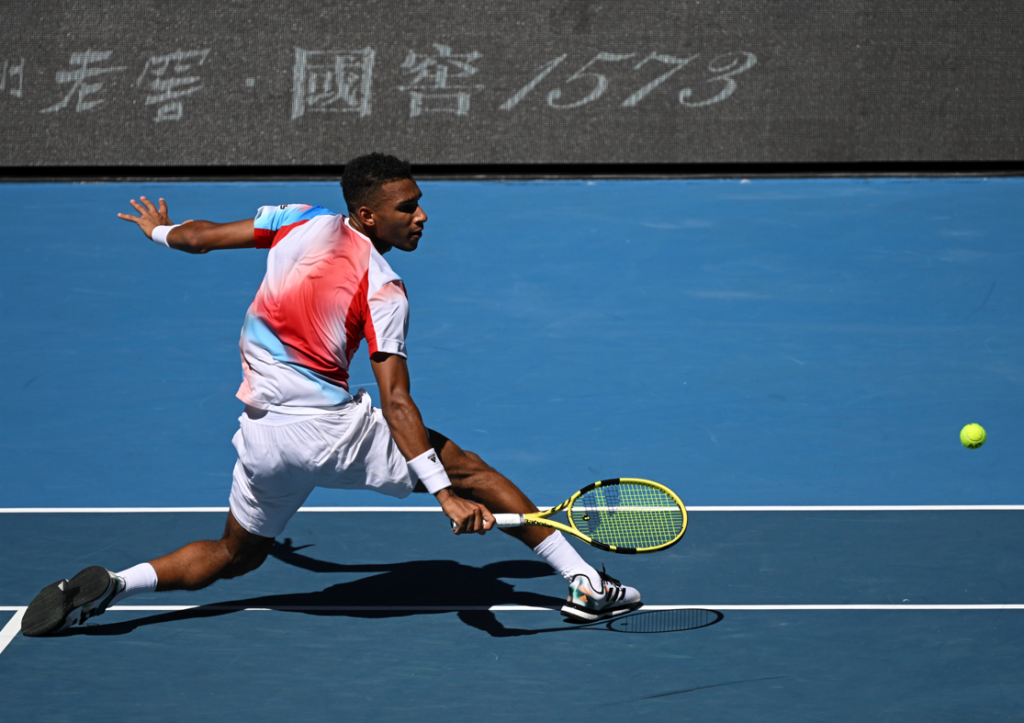
It’s down to Denis Shapovalov, 22, against Nadal, 35, on Tuesday, and Auger-Aliassime, 21, taking on the 25-year-old Medvedev on Wednesday, for a chance to have two Canadians together in the semi-finals of a Grand Slam event for a historic first time.
Auger-Aliassime’s success – the quarter-finals or better at his last three Grand Slam events – is the end product of a journey that began in earnest at 13 as an uber-talented prospect at the National Tennis Centre presented by Rogers in Montreal. When a European journalist recently asked him if there had been some kind of a click or breakthrough moment in his game in the last little while that explains the success that has seen him rise to No. 9 in the ATP Tour rankings, he gave a long-form response that placed his improvement in a broader context. “To be honest, my evolution has been since I was 14 or 15 years old,” Auger-Aliassime said. “I was very precocious, among the most precocious guys of my generation and all generations. There have been certain downs, months that were difficult but I’ve still always tried to work hard to get better. Last year and in 2020, whatever happened I worked hard to become a better player. That’s allowed me to be in the top 10 today. I feel that I deserve to be where I am. It’s not a surprise with the evolution I’ve had and the work I’ve put in. So I don’t think that a breakthrough or something just clicked six months ago or whenever. It’s just a normal evolution with what I’ve been doing since I was 14 or 15.”
While that evolution may or may not result in him getting a win over the No. 2-ranked Medvedev on Wednesday – he’s 1-9 against top-five players over his career – he is a young man with an old soul and a tennis destiny that should be fascinating to follow in the short, and surely the long term as well.
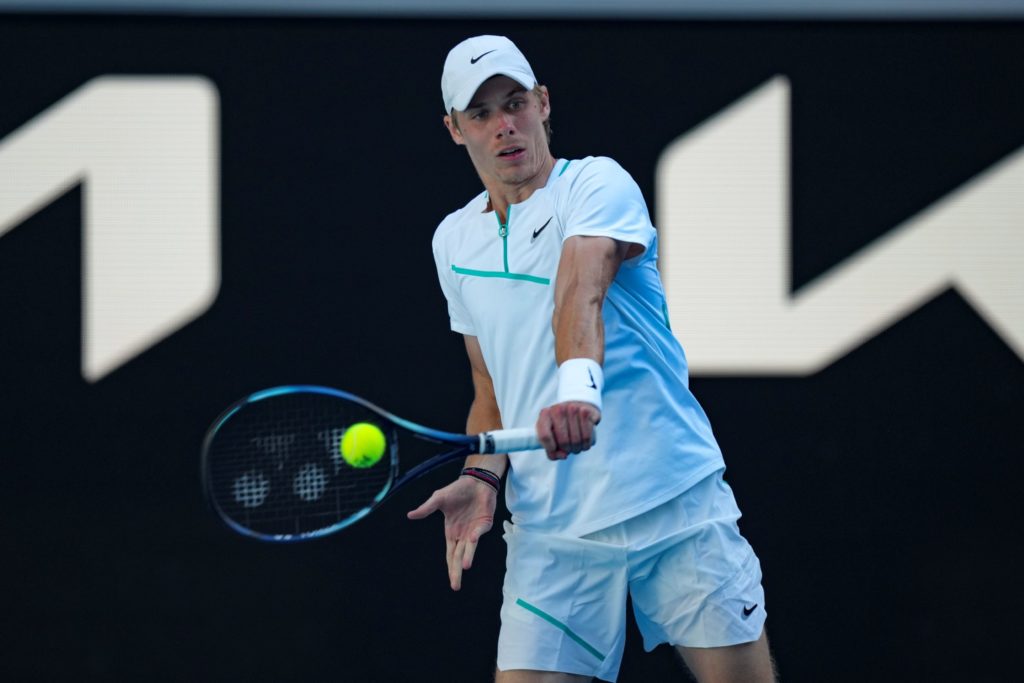
There will be a 13-year age gap when the 22-year-old Shapovalov faces 35-year-old Nadal in Tuesday’s Australian Open quarter-finals in Rod Laver Arena, not before 2 p.m. (10 p.m. ET Monday in Canada). Shapovalov’s only previous appearance in the Aussie Open main stadium was in 2019 against Novak Djokovic in a 6-3, 6-3, 4-6, 6-0 third-round loss.
Could the result of Tuesday’s match signal a generational shift if Shapovalov can beat a Nadal who’s hyper motivated for victory at the only Grand Slam event he hasn’t won twice?
The world No. 5 leads their head-to-head 3-1 but Shapovalov probably won their most memorable encounter – a 3-6, 6-4, 7-6(4) coming-out party in 2017 in Montreal when he was 18 years old.
“(It) was a tough one, that one, I remember because I was playing for No. 1 (in the rankings trying to replace Andy Murray),” Nadal recalled with a smile after defeating Adrian Mannarino on Sunday. “Honestly, he was very young and he played with amazing intensity and creating amazing shots. After the match I said he’s gonna be potential multi-Grand Slam winner. And I still think that if he’s able to keep improving, he will be a multi-Grand Slam winner, no?
“Gonna be a tough one for me. But I’m in quarter-finals, what to expect no? Is a match to try my best, to play at my highest level if I want to have chances to go through. And, yeah, I’m excited about it, honestly, no?” Yes – and a good thing because it appears he will be playing a Shapovalov near or at the peak of his form.
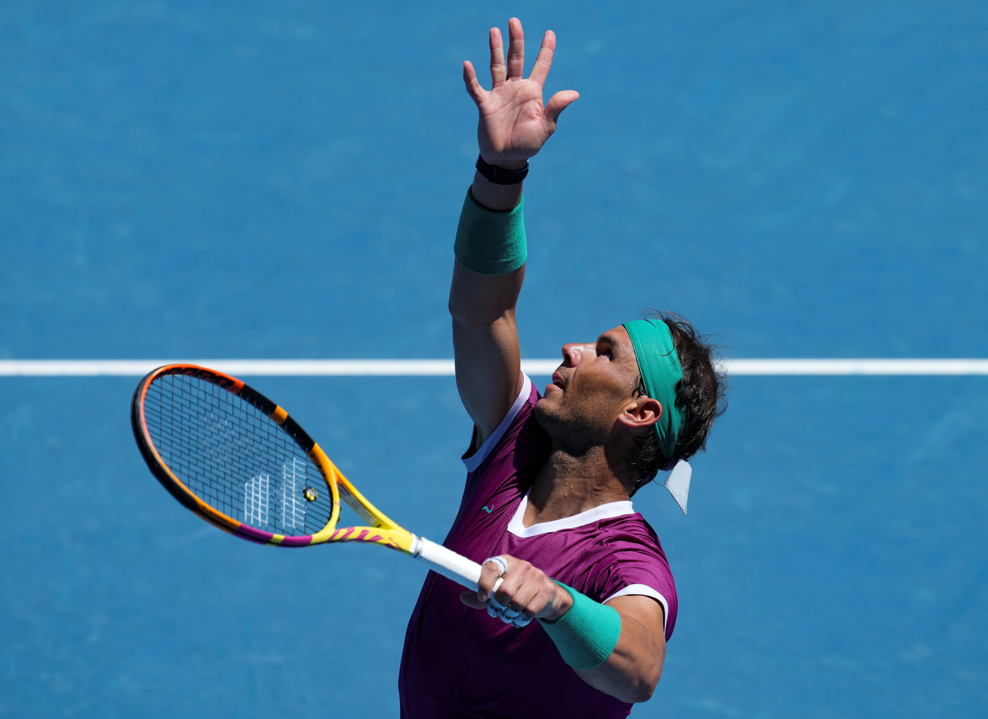
Feature Photo: Martin Sidorjak


